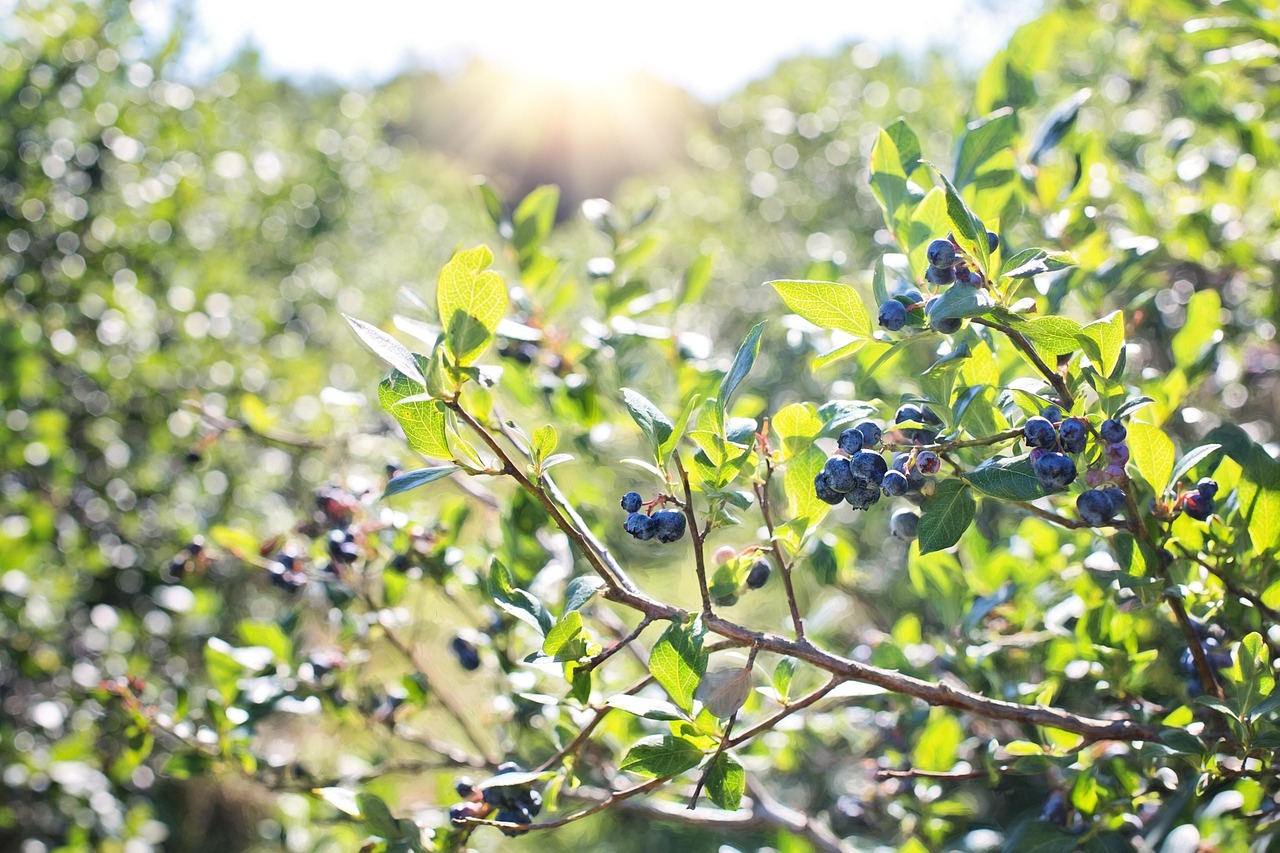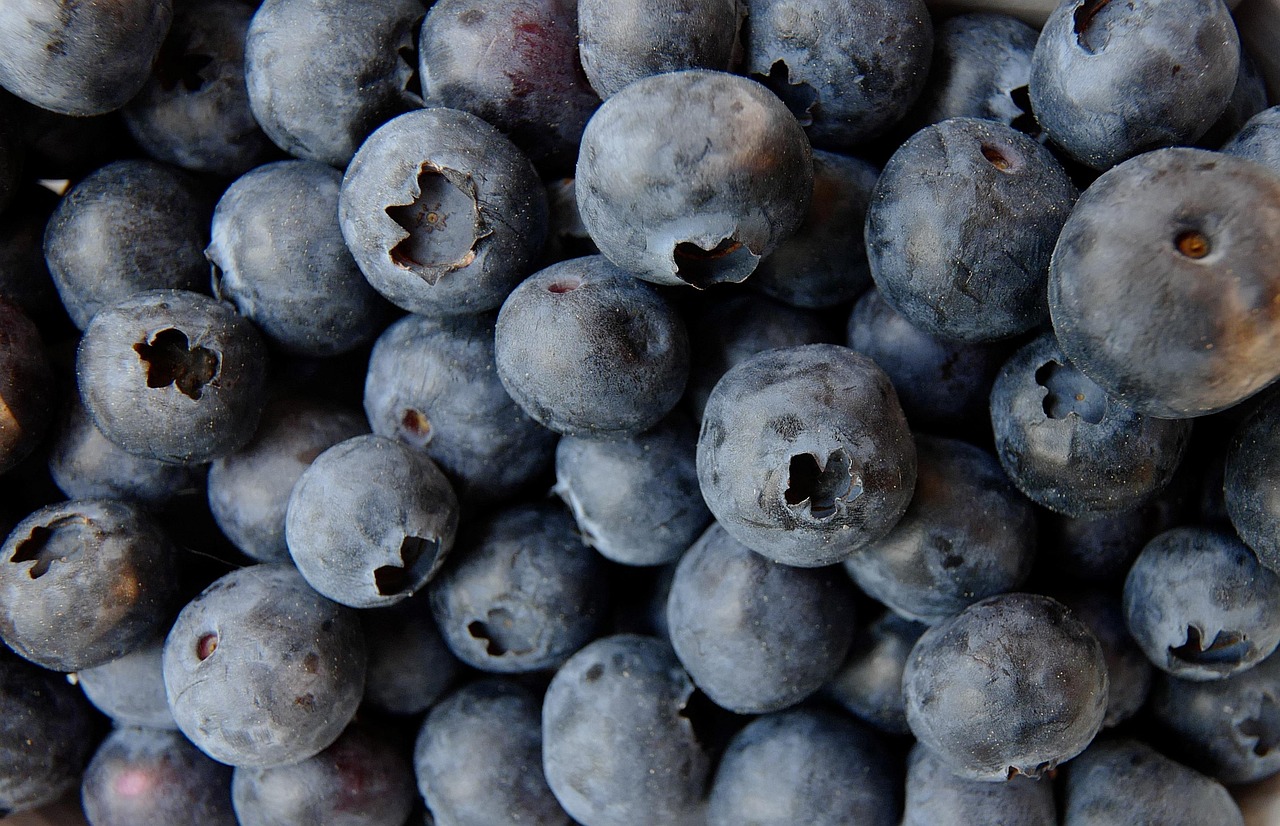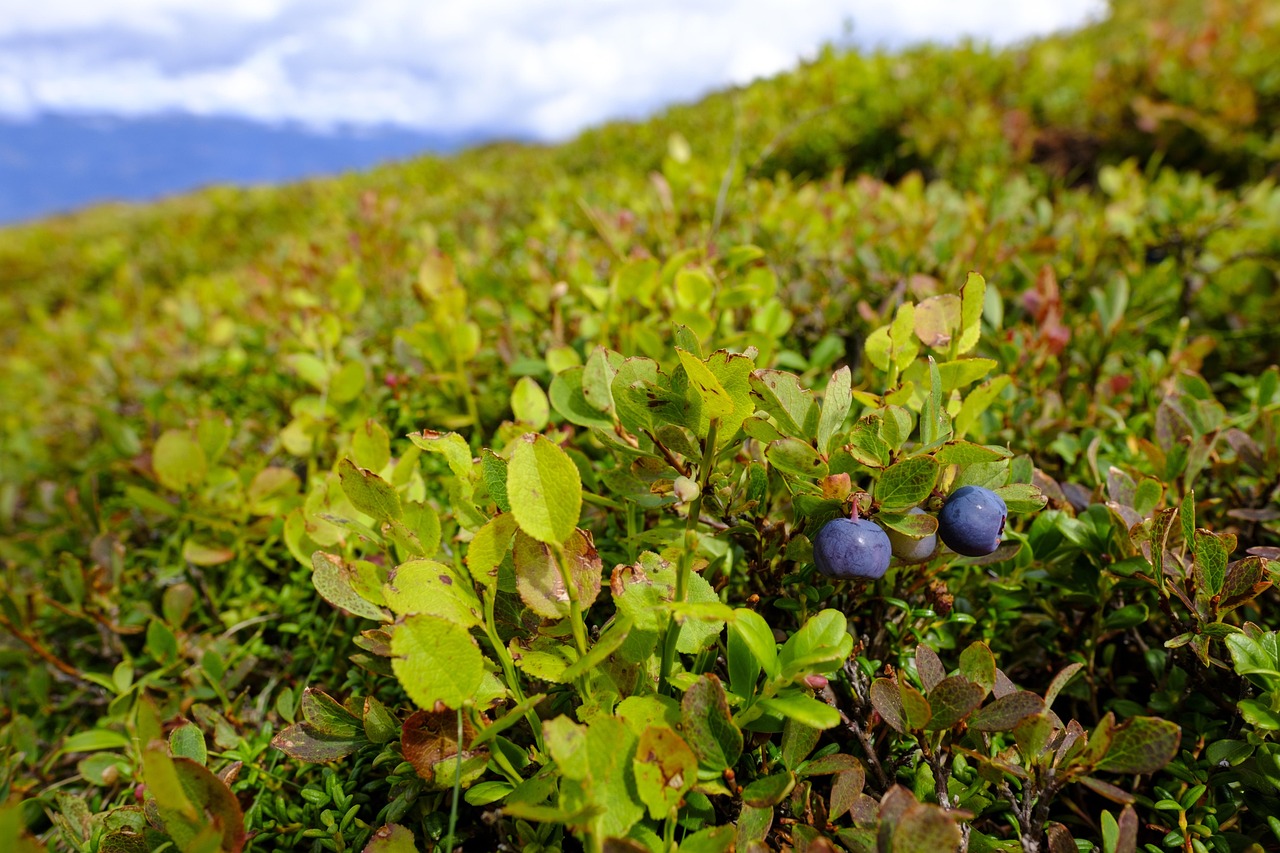Pruning blueberry bushes in spring is pivotal for boosting fertilization and fruit yield. This practice enhances growth by optimizing air circulation and sunlight exposure. By removing old branches and shaping the plant, gardeners can ensure robust development, leading to healthier plants and a more productive harvest season.
Blueberries are not only delicious but also packed with nutrients. They require specific care to thrive, particularly in terms of pruning. Pruning is a horticultural practice that involves selectively removing parts of a plant to improve its structure and health. For blueberry bushes, this practice is vital, especially in spring when the plants begin to wake from dormancy. Understanding how and when to prune can lead to better yields and healthier plants.

In spring, blueberry bushes are preparing for new growth. Pruning at this time can help remove any dead or diseased wood, allowing the plant to focus its energy on producing new shoots and fruit. This stage is crucial because it sets the tone for the entire growing season. If done correctly, spring pruning can lead to significant improvements in fruit quality and quantity.
Understanding Blueberry Bushes
Blueberry bushes belong to the Ericaceae family and are native to North America. These bushes vary in size and shape but generally fall into two categories: highbush and lowbush. Here are some key features of blueberry bushes:
| Type | Height | Fruit Size | Growing Conditions |
|---|---|---|---|
| Highbush | 4-6 feet | Large | Requires acidic soil, full sun |
| Lowbush | 1-2 feet | Small | Thrives in cold climates, prefers well-drained soil |
Blueberries require a specific pH level in the soil to grow optimally. Ideally, the soil should be acidic, with a pH between 4.5 and 5.5. Additionally, proper drainage is essential because blueberry roots are sensitive to standing water. When planning for spring fertilization, understanding these factors is crucial for successful blueberry cultivation.

As spring approaches, it is essential to assess the health of your blueberry bushes. Look for signs of damage or disease on branches. Dead or diseased wood should be pruned away first. This not only helps improve airflow but also reduces the risk of spreading disease within the plant.
The Importance of Pruning Timing
Timing is everything when it comes to pruning blueberry bushes. Spring is the most advantageous time because it allows you to shape the plant before it enters its most active growth phase. If you prune too early, when the plant is still dormant, you risk harming new buds that would produce fruit.
Generally, late winter to early spring is the best window for pruning blueberries. However, the specific timing can depend on your local climate and the variety of blueberry you are growing. In regions with milder winters, pruning can start as early as late February. In cooler areas, wait until late March or early April when the threat of frost has decreased.

Pruning Techniques for Optimal Growth
There are several techniques you can use when pruning blueberry bushes. Below are some effective methods:
- Thin Out Old Wood: Remove old, woody branches that are more than 4 years old. These branches produce fewer berries.
- Encourage New Growth: Cut back younger branches to promote new growth. This will help balance old wood with new productive stems.
- Shape the Bush: Maintain an open center in your bush to allow sunlight to penetrate and air to circulate.
- Remove Suckers: Cut away any suckers that grow from the base of the plant. This helps direct energy to main branches.
Each of these techniques serves a purpose in improving the overall health of blueberry bushes. By ensuring that sunlight and air can reach all parts of the plant, you promote better growth and higher fruit production.
In addition to these pruning techniques, using proper tools is crucial for effective results. Sharp pruners or loppers will make clean cuts that help prevent disease entry points on the plant. Always disinfect your tools before starting to minimize any risk of transferring pathogens between plants.

Incorporating these practices into your spring routine will not only enhance the health of your blueberry bushes but also prepare them for a fruitful season ahead. As you prepare for fertilization, keep in mind that healthy bushes yield better fruits, making your efforts in pruning even more worthwhile.
Spring Fertilization for Blueberry Bushes
After pruning your blueberry bushes, the next critical step is fertilization. Spring fertilization provides the necessary nutrients to support new growth and fruit production. Blueberries have unique nutrient requirements that differ from many other plants. Understanding these needs is essential for optimal health.
Nutrient Requirements of Blueberry Bushes
Blueberries thrive in acidic soils and have specific nutrient needs. The primary nutrients include nitrogen, phosphorus, and potassium, often referred to as NPK. Additionally, blueberries benefit from micronutrients such as magnesium, calcium, and iron. Below is a breakdown of these essential nutrients:
| Nutrient | Function | Sources |
|---|---|---|
| Nitrogen (N) | Promotes healthy foliage and growth. | Blood meal, fish emulsion, or organic fertilizers. |
| Phosphorus (P) | Supports root development and flowering. | Bone meal or rock phosphate. |
| Potassium (K) | Enhances fruit quality and overall plant health. | Potassium sulfate or greensand. |
| Micronutrients | Essential for various physiological functions. | Chemical fertilizers or compost. |
Choosing the Right Fertilizer
Selecting the correct fertilizer is crucial for the health of your blueberry bushes. There are various options available, including synthetic and organic fertilizers. Here are some considerations:
- Organic Fertilizers: These are derived from natural sources and often improve soil health over time. Options include compost, manure, and specific organic blends formulated for acid-loving plants.
- Synthetic Fertilizers: These are chemically manufactured and can provide immediate nutrient availability. They often have a higher concentration of nutrients but may not improve soil structure.
- Slow-Release Fertilizers: These fertilizers release nutrients gradually over time, reducing the risk of nutrient leaching and ensuring that the plants receive a steady supply throughout the growing season.
When to Fertilize Blueberry Bushes
The timing of fertilization is as important as the type of fertilizer used. For blueberry bushes, it is best to fertilize in early spring just before new growth begins. This timing allows the plants to utilize the nutrients as they emerge from dormancy. A second application can be made in late spring to support ongoing growth and fruit development.
To determine the exact timing, observe the buds on your bushes. When they start to swell and show signs of life, it’s time to apply fertilizer. Avoid fertilizing too early when the risk of frost is still present.
Application Methods for Fertilizing Blueberries
Applying fertilizer correctly ensures that your blueberry bushes receive maximum benefit. There are several methods for applying fertilizer:
- Broadcasting: Spread the fertilizer evenly around the base of the bush, avoiding contact with the stems. This method allows for uniform distribution.
- Side-Dressing: Apply fertilizer in a narrow band along the sides of the bushes once new growth is visible. This technique minimizes competition with weeds.
- Drenching: Mix fertilizer with water and apply directly to the soil around the roots. This method helps in quick nutrient absorption.
Watering After Fertilization
Watering is a critical step following fertilization. Moisture helps dissolve the fertilizer, allowing nutrients to penetrate the soil and reach the roots effectively. It is essential to provide adequate water after application to avoid root burn from concentrated fertilizers.
Ensure that the soil is consistently moist but not waterlogged. Blueberry bushes prefer well-drained soil, so monitor watering based on rainfall and temperature conditions. During dry spells, aim for at least 1 inch of water per week.
Signs of Nutrient Deficiency
Even with proper fertilization, blueberry bushes can exhibit signs of nutrient deficiencies. Recognizing these signs early can help prevent long-term damage:
- Pale Leaves: A sign of nitrogen deficiency; leaves may turn yellow while veins remain green.
- Poor Fruit Development: Insufficient potassium can result in smaller or fewer berries.
- Curling Leaves: This may indicate a lack of magnesium or iron; leaves may curl or exhibit interveinal chlorosis.
If you notice these symptoms, consider conducting a soil test to identify specific nutrient deficiencies. Based on the results, adjust your fertilization strategy accordingly to support your blueberry bushes effectively.
Pest and Disease Management for Blueberry Bushes
Alongside proper pruning and fertilization, managing pests and diseases is essential for the health of blueberry bushes. These plants can be susceptible to various pests and diseases that can hinder growth and reduce fruit yield. Early detection and intervention are key to maintaining healthy bushes.
Common Pests Affecting Blueberry Bushes
Several pests can pose a threat to blueberry bushes. Understanding these pests can help you identify and manage them effectively. Here are some of the most common pests:
- Blueberry Beetle: This pest feeds on the leaves of blueberry bushes, leading to reduced vigor and fruit production. Look for small, shiny beetles on the foliage.
- Spotted Wing Drosophila: This fruit fly lays eggs in ripe berries, causing them to rot. Check for small puncture wounds in the fruit.
- Aphids: These small insects suck sap from the plant, leading to stunted growth and curled leaves. They often cluster on new growth.
- Japanese Beetles: These beetles skeletonize leaves, leaving only the veins intact. They are usually active during the summer months.
Preventive Measures Against Pests
Taking preventive measures can greatly reduce the risk of pest infestations. Here are some strategies you can implement:
- Regular Inspections: Frequently check your blueberry bushes for signs of pests or damage. Early detection allows for prompt action.
- Encourage Beneficial Insects: Attracting natural predators, such as ladybugs and lacewings, can help control pest populations.
- Use Row Covers: Lightweight fabric covers can protect young plants from pests while allowing sunlight and water to penetrate.
- Maintain Plant Health: Healthy plants are more resistant to pests. Ensure proper watering, fertilization, and pruning practices are followed.
Common Diseases Affecting Blueberries
Blueberry bushes are also vulnerable to various diseases that can affect their overall health. Recognizing these diseases is vital for effective management:
- Powdery Mildew: This fungal disease appears as a white powdery coating on leaves and stems. It thrives in humid conditions.
- Botrytis Blight: Also known as gray mold, this disease affects flowers and fruit, causing them to rot. It usually occurs in wet weather.
- Phytophthora Root Rot: This soil-borne pathogen causes roots to decay, leading to wilting and dieback. Poor drainage increases the risk of this disease.
- Cercospora Leaf Spot: This fungal infection creates dark spots on leaves, which may eventually cause leaf drop.
Disease Management Strategies
Implementing effective management strategies is essential to control diseases in blueberry bushes. Here are some key practices:
- Proper Spacing: Ensure adequate spacing between plants to improve air circulation and reduce humidity levels around the foliage.
- Watering Practices: Avoid overhead watering, which can promote fungal diseases. Water at the base of the plant early in the day to allow foliage to dry quickly.
- Cultural Controls: Remove any infected plant debris from the garden to minimize the spread of diseases.
- Pesticide Application: Use fungicides or organic treatments when necessary, especially during periods of high humidity or after rain events.
The Role of Soil Health in Plant Resilience
The health of the soil plays a significant role in the resilience of blueberry bushes against pests and diseases. Healthy soil supports beneficial microorganisms, improves nutrient availability, and enhances water retention capabilities. Here are some tips for maintaining soil health:
Soil Testing
Conducting regular soil tests helps determine pH levels and nutrient content. Knowing your soil’s condition allows you to make informed decisions about fertilization and amendments.
Organic Matter Addition
Incorporate organic matter such as compost or aged manure into the soil. This practice improves soil structure, enhances nutrient retention, and promotes beneficial microbial activity.
Mulching
Add a layer of organic mulch around the base of blueberry bushes. Mulch helps retain moisture, suppress weeds, and gradually enriches the soil as it decomposes.
Water Management Techniques
Water management is crucial for blueberry bush health. Overwatering or underwatering can stress plants and make them more susceptible to pests and diseases. Here are some effective water management techniques:
- Drip Irrigation: This method delivers water directly to the root zone, minimizing evaporation and runoff while ensuring consistent moisture levels.
- Avoid Waterlogging: Ensure proper drainage to prevent waterlogged conditions that can lead to root rot.
- Monitor Soil Moisture: Use soil moisture meters or simply check by hand to ensure your bushes are getting sufficient water without being oversaturated.
By integrating pest and disease management strategies with soil health practices and effective water management techniques, you can create a thriving environment for your blueberry bushes. These combined efforts will support healthy growth, vibrant foliage, and bountiful fruit production throughout the growing season.
Additional Tips for Successful Blueberry Cultivation
Caring for blueberry bushes involves more than just pruning, fertilization, pest management, and watering. Here are some additional tips that can enhance your overall blueberry cultivation experience:
Choosing the Right Varieties
Selecting the appropriate blueberry variety for your climate and soil conditions is crucial. Different varieties have varying requirements and resistances to pests and diseases. Here are some popular options:
- Highbush Varieties: These are ideal for regions with colder climates. Varieties like ‘Bluecrop’ and ‘Legacy’ are known for their hardiness and high yields.
- Lowbush Varieties: Suitable for colder areas, lowbush blueberries like ‘Wild Blueberries’ are often used for commercial production due to their intense flavor.
- Southern Highbush Varieties: These varieties, such as ‘Southmoon’ and ‘Emerald,’ thrive in warmer climates, making them perfect for southern growers.
Seasonal Care Routine
Developing a seasonal care routine helps ensure that your blueberry bushes remain healthy throughout the year. Here’s a basic outline:
- Spring: Focus on pruning, fertilizing, and monitoring for pests and diseases.
- Summer: Continue pest management, ensure adequate watering, and consider mulching to retain moisture.
- Fall: Prepare the bushes for winter by applying a layer of mulch and conducting any late-season pruning if necessary.
- Winter: Protect plants from extreme cold and snow damage by covering them with protective materials if needed.
Harvesting Blueberries
The joy of growing blueberries culminates in the harvest. Proper harvesting techniques ensure that you get the best quality fruit:
- Timing: Harvest berries when they are fully ripe. Ripe blueberries will be deep blue with a silvery bloom. Taste-testing is a good way to determine ripeness.
- Gentle Handling: Handle berries with care to avoid bruising. Use shallow containers for collection to minimize pressure on the fruit.
- Regular Harvests: Check bushes every few days during peak season. Regular harvesting encourages further fruit production.
Final Thoughts
Caring for blueberry bushes requires a comprehensive approach that includes proper pruning, thoughtful fertilization, effective pest and disease management, and diligent watering practices. By understanding the unique needs of blueberry plants and providing them with the right care, you can enjoy thriving bushes that yield delicious fruit year after year.
The integration of soil health practices and seasonal care routines not only enhances plant resilience but also supports sustainable gardening practices. With the right attention to detail, you can cultivate blueberry bushes that not only produce an abundance of fruit but also contribute positively to your garden’s ecosystem.
Whether you are an experienced gardener or a newcomer to blueberry cultivation, these guidelines serve as a roadmap for success. Embrace the journey of growing blueberries, and look forward to enjoying the fruits of your labor in delicious pies, jams, or fresh off the bush.
With dedication and proper care, your blueberry bushes will flourish, providing joy and nourishment for many seasons to come. Happy gardening!
